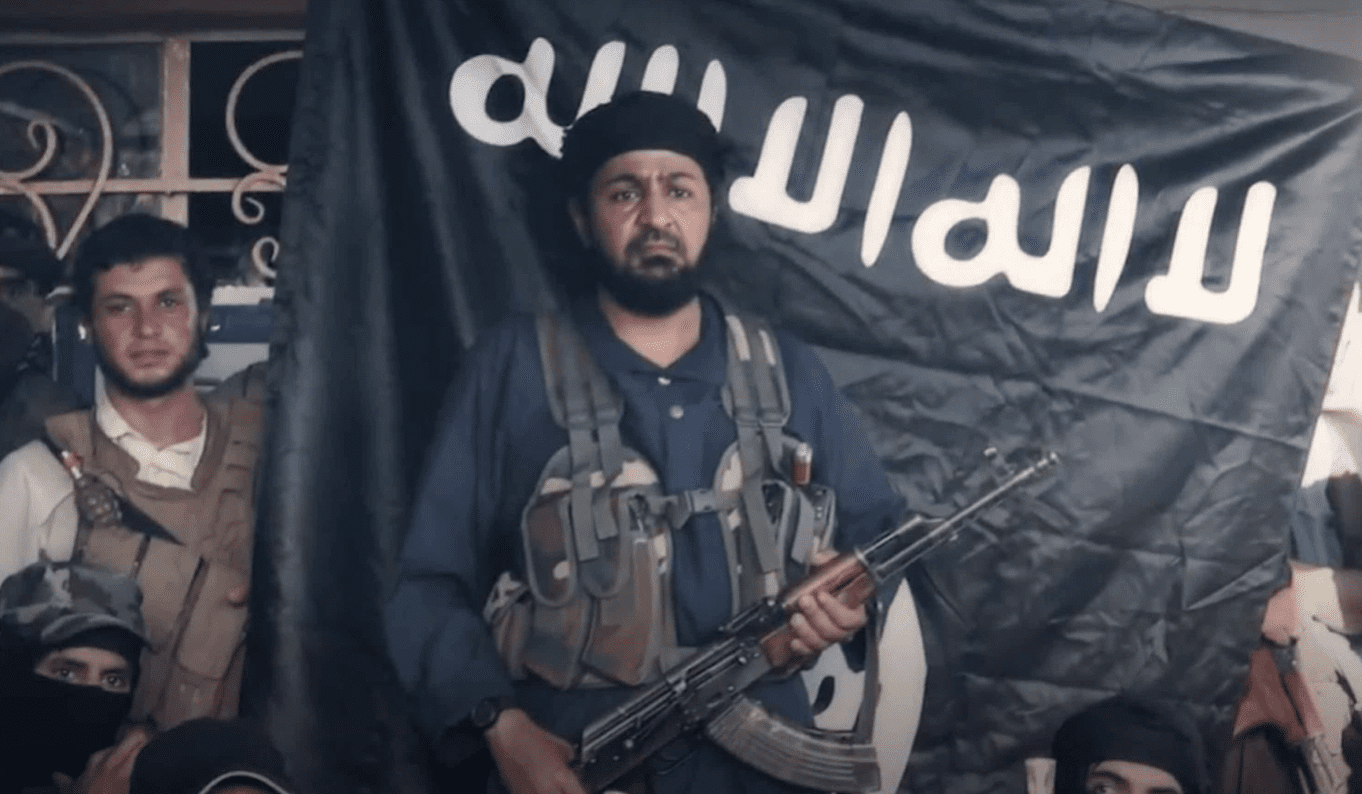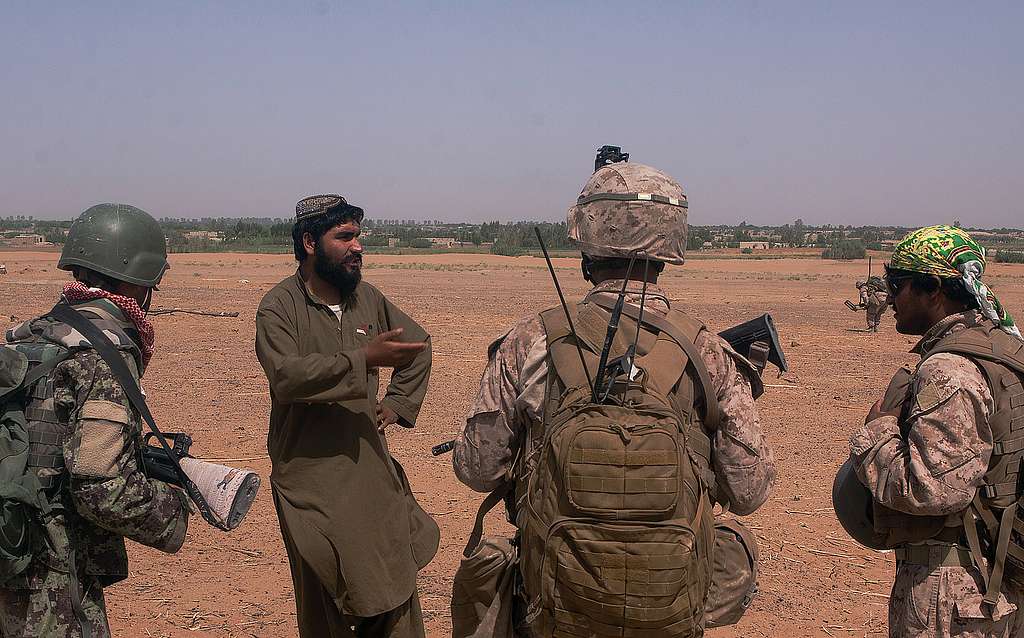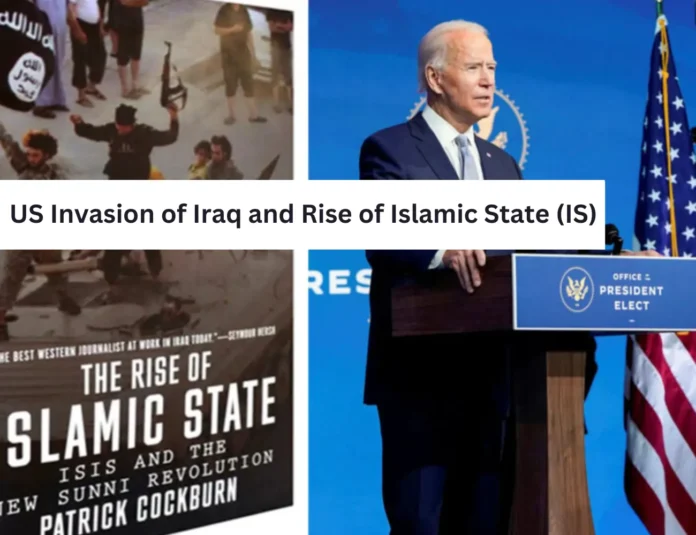Introduction US Invasion of Iraq
A major turning point in the development of the Middle East occurred when the United States (US) occupied Iraq. The invading forces said they were there to install a democratic government in Iraq in place of Saddam Hussein’s dictatorship. There were serious repercussions of the invasion as well, for example, the expansion of the Islamic State (IS) to become a serious regional and worldwide menace. US Invasion of Iraq and Rise of Islamic State (IS)
The presence of foreign fighters, the inability of the Iraqi government to provide security and basic services, the ineffectiveness of US strategy in dealing with the insurgency, and the resulting power vacuum are all factors that contributed to the rise of IS in Iraq.
“Saddam Hussein’s reign deepened the sectarian rift between Sunni and Shiite populations in Iraq, which had existed for some time.”
US-led invasion exacerbated already existing sectarian tensions, leading to a rise in both bloodshed and instability. Al-Qaeda in Iraq (AQI), the precursor of the Islamic State (IS), formed in part because the Iraqi government failed to provide enough security and basic amenities. The influx of foreign militants, especially from neighboring Arab nations, was important to AQI’s expansion and success.
Furthermore, the political vacuum and ineffective US response to the insurgency following Saddam Hussein’s downfall offered fertile ground for the expansion and consolidation of AQI/IS in the region (Phillips, 2016). In this paper, I’ll investigate if the formation of the Islamic State (IS) was preordained by the American-led invasion of Iraq in 2003.
Factors Contributing to the Rise of Islamic State and other militant groups
Islamic State (IS) did not suddenly become a major regional and global danger; rather, its ascent was the result of a complex combination of causes that built up over the course of several decades.
This section of the essay will analyze the role that political instability and sectarianism in Iraq played in the rise of IS, as well as the role that the failure of the Iraqi government to provide security and basic services, the presence of foreign fighters, and an inadequate US strategy to deal with the insurgency and subsequent power vacuum played.
Iraq’s political divide and sectarianism
ISIS’s meteoric growth can be traced in large part to Iraq’s decades-long struggle with political instability and sectarianism. Long before Saddam Hussein’s dictatorship, tensions between Sunni and Shiite groups in Iraq were already high.
Sectarian tensions were already high before the US-led invasion exacerbated them, resulting in further violence and instability. This instability paved the way for the growth of a number of armed organizations, notably Al-Qaeda in Iraq (AQI), the precursor to the more recently formed Islamic State (IS).
The Iraqi government’s inability to deliver adequate security and social services
The inability of the Iraqi government to provide adequate levels of security and other necessities also played a role in IS’s meteoric ascent. Corruption, incompetence, and subpar service delivery were all pervasive during the US-led invasion of Iraq because the Iraqi government had a hard time establishing a stable and functional administration.
Armed organizations like AQI were formed in response to the government’s failure to provide enough security and basic services, using the population’s frustrations as fuel to gain power and support.
Invasion by terrorists from abroad
Another contributor to IS’s success was the influx of foreign militants, many of whom came from neighboring Arab nations. Religious and ideological inspirations, the lure of adventure, and the chance to engage in violent action against perceived adversaries all drew these warriors to Iraq and Syria. Furthermore, Foreign fighters joined al-Qaeda in the Arabian Peninsula (AQI) and other factions, helping them expand and gain power. In addition, they supplied IS with a wealth of talent and experience that helped the organization flourish.
Neither the insurgency nor the ensuing power vacuum were adequately addressed by the United States.
The formation of ISIS may be traced back to a number of strategic blunders and mistakes committed by the United States during and after its invasion and occupation of Iraq. Armed organizations were able to take advantage of a power vacuum caused by the decision to dismantle the Iraqi army and security forces and the subsequent failure to fully safeguard the country. As a result of allowing armed groups to co-opt and infiltrate these proxies, the US approach of relying on local proxies to provide security and stability instead contributed to more instability and violence.

The US occupation of Iraq and the presence of terrorist Islamist groups US Invasion of Iraq and Rise of Islamic State (IS)
The invasion of the U.S. Iraq resulted in the launch of the Islamic State. The invasion of Iraq was justified by claims that Saddam Hussein’s dictatorship threatened regional and global security and that Iraq had WMDs. Democracy and stability in the Middle East were other goals of the invasion.
- The invasion of Iraq destroyed Iraq’s security and administrative institutions, creating a power vacuum that armed groups exploited. After the invasion and conflict, Al-Qaeda in Iraq (AQI) became one of the most notable of these groups.
- Abu Musab al-Zarqawi, a Jordanian fighter, commanded AQI in its quest to build an Islamic state in Iraq and target the US and its allies.
- AQI bombed Iraqi civilians and security personnel and kidnapped and executed international hostages. The gang caused terrible sectarian bloodshed in Iraq, mainly between Sunni and Shia populations.
US-led invasion US Invasion of Iraq and Rise of Islamic State (IS)
- The US-led invasion and occupation of Iraq intensified Sunni-Shia animosity. The US-led administration barred many Sunni politicians and bureaucrats from power to foster democracy and a new political order in Iraq.”
- This caused Sunni animosity and marginalization, which AQI used to recruit and support. Additionally, U.S. policies and actions may have contributed to IS’s emergence.
- Many Iraqis resented the US occupation as illegitimate and repressive due to the US military’s harsh questioning, torture, and other human rights abuses.
- These activities may have radicalized Iraqis and led them to AQI and IS.
Furthermore, The US military’s targeting of suspected terrorists and insurgents often killed or imprisoned innocent civilians. Armed organizations used Iraqi resentment and rage to recruit and support them.

The rise of IS after the US intervention
The growth of ISIS in Iraq is a difficult question that has been contested since 2014. The US contributed to the rise of ISIS in Iraq, among other causes. ISIS emerged after the 2003 US-led invasion of Iraq left a power vacuum. This essay will examine how the US destabilized Iraq after the invasion, the formation of various armed groups, the rise of sectarian violence and instability, and US policies and actions that may have contributed to ISIS’s rise.
Destabilizing Iraq
The 2003 Iraqi invasion destabilized the country. After Saddam Hussein was overthrown, armed organizations like Al-Qaeda in Iraq (AQI), and subsequently ISIS, took over. The US failed to plan for the post-invasion era, leaving the Iraqi government weak and unable to rule. The interim administration and successive governments in Iraq lacked the resources to stabilize the nation.
The US either didn’t want a stable, pluralist Iraq or it was hard to make one. Pollack said numerous journalists and Iraqi military personnel have said Iraqis desire development projects and rehabilitation. However, the US ignored the difficulties and pursued its strategic goals. After Saddam Hussein’s demise, Iraq engaged in a deadly civil war with American and British soldiers. Thousands of people were slain in indiscriminate fighting between parties.
- The US government was there during the massive debacle in Iraq. From this perspective, the US caused the Islamic State in Iraq.
- The Bush administration also allowed Iraqi extremist organizations to form. Petty political and strategic goals overrode professional judgments.
- The US never provided enough money for Iraq’s rebuilding.
- The Americans failed to make Iraq a representative democracy.
The sectarian gap widened. Many empirically-based intelligence reports were disregarded. For decades, the Bush administration’s vanity and hubris plagued Iraq and other nations. The Bush administration’s hubris caused ISIS to arise and cause immense harm to Iraqi and Middle Eastern cultures.
Armed Group Formation
After the Iraq war, AQI, which became ISIS, and other armed organizations formed. AQI first attacked the US-led coalition forces in Iraq but eventually switched to fighting the Iraqi government and Shia organizations. Disaffected Sunnis who felt alienated by the new Shia-dominated administration supported the organization. Certain circumstances led to Iraqi terrorism. The US invasion overthrew Saddam Hussein, and new Iraqi leaders established a new government.
First, the Iraqi Baath Party ban was crucial. The party controlled Iraq for a long time. The US constructed a new political framework for Iraq after a vast political vacuum. The Iraqi professional military bar followed. After the military disbanded, hundreds of professional soldiers had no alternative source of income.
Iraq quickly descended into a deadly civil war
Iraq quickly descended into a deadly civil war because of these events’ political and security vacuum. Sunni political authority has changed greatly over the years. Sunni governing elites ruled Iraq, and their political culture was embraced. After the US invasion, political equilibrium was ruined. A Shia prime minister’s swearing-in was a momentous occasion in Iraq. Shia ministers ran all the significant ministries. Iraqis saw their first Kurdish president, making further history. Kurds accepted the presidency to gain independence from Iraq.
“This power-sharing agreement gave Saddam’s ruling class (Sunnis) the parliamentary speaker post.” The dismantled Iraqi military was harmful to the US and Iraq in the future. The defunct military regroups under extremist organizations like AIQ and others after years. The Shia-dominated administration failed to include Sunni governing elites. Furthermore, In 2014, thousands of security forces joined IS, an extremist and anti-Shia terrorist organization, to unleash a new wave of terror in Iraq and other Shia-dominated nations.
” Abu Bakr Al-Baghdadi, the ISIS leader, claimed the Caliph System in Iraq” and other Muslim nations and violently opposed the Iraqi Shia government and the US. The ISIS attack was cruel. ISIS terrorized Iraq, Syria, and other countries for years. That region now routinely abducts, slaughters, amputations, and rapes. “
Rise in sectarian violence and insecurity
The Iraqi invasion increased sectarian bloodshed and instability. Sunnis resented the new Iraqi government’s Shia majority. This hatred was reinforced by the US decision to dismantle the Iraqi army and cleanse Sunni-dominated Ba’ath party members. Many Sunnis felt sidelined and disenfranchised by the new government, which intensified sectarian tensions. Extremist organizations originated in sectarian conflicts.
The leading organization is the Islamic State of Iraq. Sunnis became sectarian as the Iraqi government and the US sought to expel ISIS. Because ISIS contained Sunnis and opposed Shias. It propagated sectarianism across society. This may be more common in the Middle East than in other Muslim nations. Sectarianism was a battle that included the people. In Muslim societies, Islam dominates politics and society.
After that, Middle Eastern governments with Sunni and Shia populations made religion more sensitive. In Iraq, the administration was sectarian, deepening the gap. This led to the rise of terrorist organizations like ISIS. ISIS was initially a counterforce to overthrow the Shia majority in the new system. It extended its operations and aggressive attacks against Shias. Targeted Shia mosques and religious places. Shias were called anti-Islam and unbelievers. Foreign occupation shaped post-war Iraq.
US policies and actions
Several US initiatives may have helped ISIS rise in Iraq. According to Pfeffer, the US committed serious blunders during the invasion and occupation of Iraq. First, the militarization was continued and then the ban on the Baath party was imposed. These actions hurt Shia-led Iraqi administrations and the US. Ironically, the judgments were made against CIA guidance.
These choices did not involve crucial cabinet employees. Moreover, These were captured rapidly without analysis and The Iraqi intellectuals were ignored. The Bush administration’s choice devastated Iraq. The two main approaches hurt Iraq and America equally. The worst thing was Iraq’s dangerous security situation. The most dangerous terrorist group in Iraq, IS, sprang from insurgent choices. IS in Iraq rose mainly due to US policy. The US policy fueled the insurgency.
Policies Split Iraqi society
These policies split Iraqi society in many ways. First, the dissolved troops joined extreme organizations for food. Second, Sunnis lost their respect and power. Sunnis dominated Baath, but that didn’t show they were entirely culpable.
These and other factors contributed to ISIS. The US also failed to plan for the post-invasion era, leaving the Iraqi government weak and unable to rule. Additionally, Disaffected Sunnis who felt alienated by the new administration supported armed organizations like AQI. The US-led coalition also tortured and abused captives in Abu Ghraib, fueling sectarian tensions. These tactics alienated Sunnis and bolstered AQI. These causes radicalized the public and led to IS in Iraq.

Conclusion US Invasion of Iraq and Rise of Islamic State (IS)
In conclusion, political and sectarian tensions in the Middle East, the Syrian civil war, and the power vacuum caused by the 2003 US-led invasion of Iraq contributed to the establishment of the Islamic State. The war destabilized Iraq and fostered extremist organizations, which is the major reason. Moreover, Extremist organizations used the animosity of the West toward the US-led occupation of Iraq to seek support. The U.S. invasion of Iraq spawned IS.
The power struggle between Shia and Sunni Muslims in the region, regional governments’ failure to address residents’ problems, and radical ideology also contributed to the group’s emergence. Thus, the US-led invasion of Iraq contributed to the formation of the Islamic State, but it was not inevitable. Other internal and external variables contributed to the group’s success.





